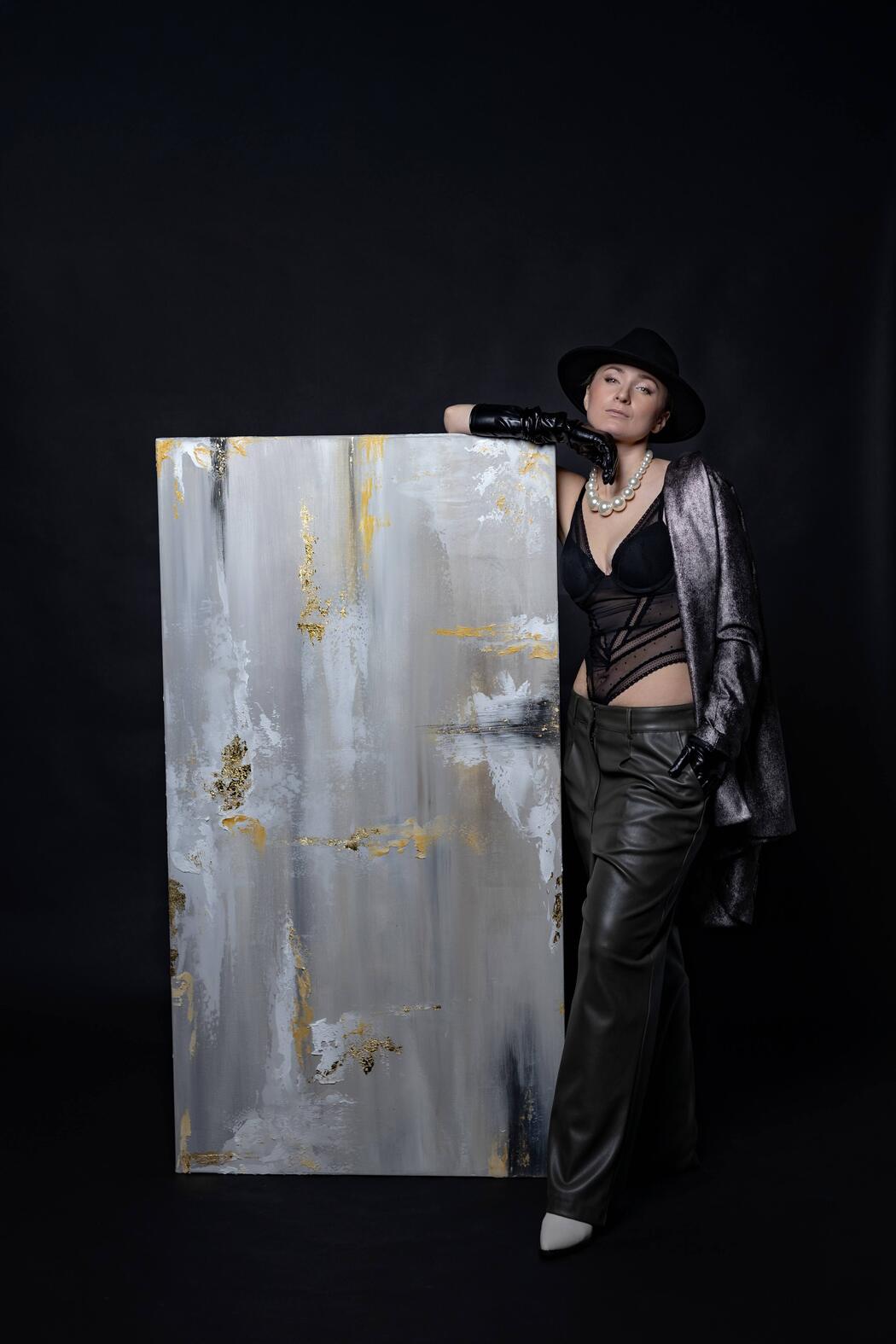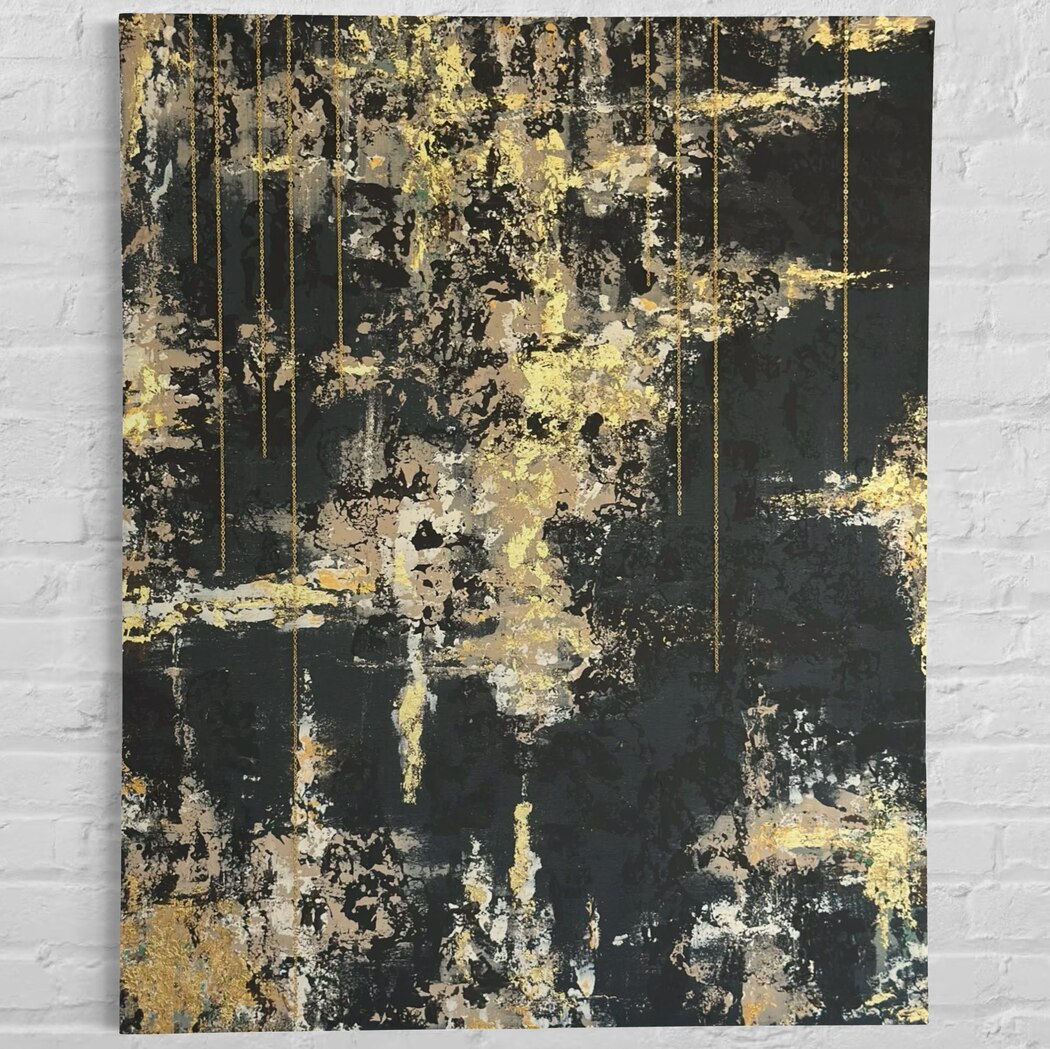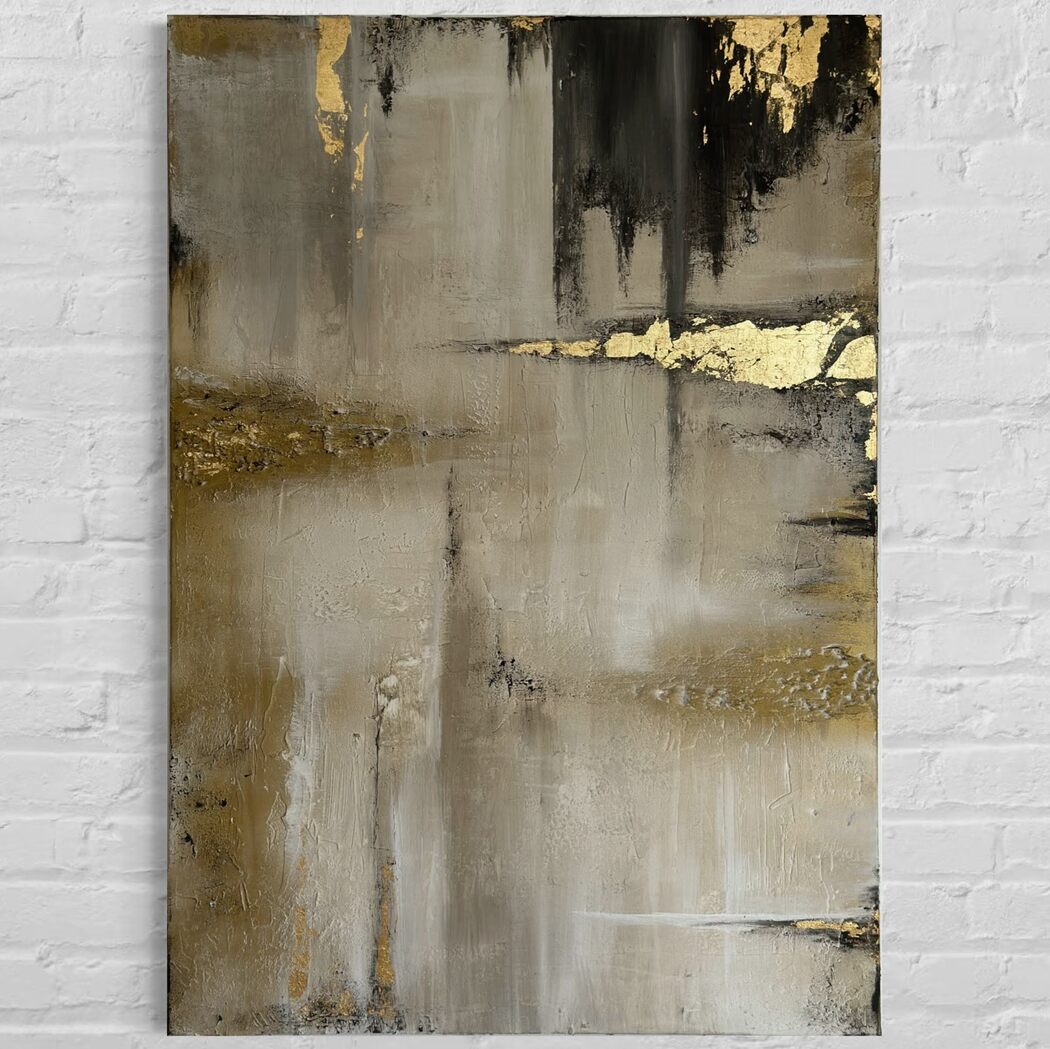Olha Markiza
Year of birth: 1988
Where do you live: I am Ukrainian, based in Slovenia (Europe).
Your education: Master of Marketing. Lingerie designer.
Describe your art in three words: Time. Soul. Emotion.
Your discipline: Contemporary abstract art, mixed media art
Instagram

How did you first discover your passion for abstract art, and what drew you to work with acrylics, texture paste, and gold leaf?
My passion for abstract art emerged many years ago when I began traveling and discovering the world—I was always captivated by the aesthetics of these pieces in various spaces, whether in hotel interiors, restaurants, office lobbies, magazines, or the cultural venues and events I attended. Abstract art has always been that unique detail for me, adding completeness and character to any space. While decorating my own home, I sought something unconventional and modern, and I discovered textured artworks. Each day, seeing them sparked new ideas and inspired me to try creating my own. My first experience working with texture paste, acrylics, and gold leaf was transformative, and it quickly became a true passion.
You mentioned that your fashion industry experience influenced your sense of aesthetics. In what ways does it impact your approach to creating abstract paintings?
Yes, working in the fashion industry leaves a lasting imprint. Collaborating with designers, stylists, and organizing fashion shoots refined my sense for color, texture, proportion and general composition. This experience guides me in creating paintings where each element holds significance, and even the smallest detail can shift the overall impact. Just as in fashion, where details define style and transform a person’s appearance, an interior painting brings a space its own unique atmosphere and sense of completion.
 Olha Markiza, Golden Threads of Moment, 2024
Olha Markiza, Golden Threads of Moment, 2024
Your work often explores freedom from rules and limitations. How do you translate that concept into the colors, shapes, and textures in your paintings?
Freedom from rules means creating intuitively, without preset boundaries in colors or forms. I allow myself to respond to my feelings in the moment, and it’s this freedom that shapes my work. Textures, colors, and lines emerge as guided by inner inspiration, becoming embodiments of true spontaneity.
How do you balance the artistic expression in your work with its role as interior art meant to complement a space?
I strive to create pieces that stand alone as works of art but also interact well with their surroundings. Sometimes it’s about finding a delicate balance, and other times it’s more intuitive—how the colors and textures of my work might resonate with an interior, enhancing its atmosphere. I believe harmony between a painting and a space emerges when the work has its own life, bringing a distinctive accent to the environment.
Can you describe a significant challenge you encountered in developing your own style, and how you overcame it?
Like many artists, at one point I felt the importance of finding my own style, my “signature.” This question can create a tangible pressure, especially when seeking a distinct “hand.” However, for me, abstract art is, above all, about freedom, and I realized that I didn’t want to confine myself to rigid boundaries. I embraced the idea that my style could be dynamic and evolve over time, which allowed me to experiment freely, make mistakes, explore, and discover. Ultimately, this openness is the foundation of my art, helping me grow and stay true to myself.
 Olha Markiza, Clouded Thoughts, 2024
Olha Markiza, Clouded Thoughts, 2024
How do you choose the titles for your artworks? Do they reflect the emotions you felt while creating them or the message you want to convey?
The titles of my works come about in various ways. For some pieces, the title arises first, carrying an idea that unfolds in the creation process. Other works receive their title during creation, as emotions shape the core of the piece. Some are named afterward, adding an affirmation or wish for their future owner. However, a few pieces remain untitled, allowing the viewer to freely discover their own meaning and find a personal connection.
In your opinion, what makes contemporary abstract art appealing to a wide audience, especially when used in interior spaces?
In my opinion, contemporary abstract art appeals to the audience because it allows for personal perception and interpretation. Everyone can find their own meaning in abstract works. In the interior, such pictures are not just decorative – they become an accent that inspires, awakens emotions and adds a unique character to the space. Thanks to its versatility, abstract art fits into a variety of styles, becoming a reflection of the owner’s personality, his individuality, and for some, perhaps a way to emphasize status with a unique piece.

Leave a Reply